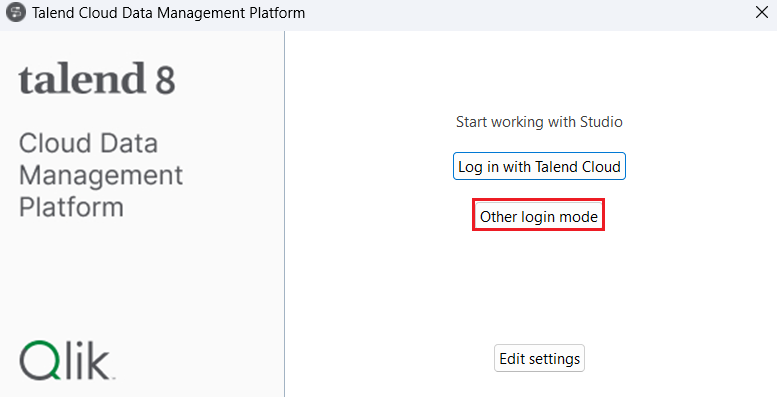Discover how a bimodal integration strategy can address the major data management challenges facing your organization today.
Get the Report →Connect to SQL Analysis Services Data and Transfer Data in Talend
Integrate SQL Analysis Services data with standard components and data source configuration wizards in Talend Open Studio.
This article shows how you can easily integrate the CData JDBC driver for SQL Analysis Services into your workflow in Talend. This article uses the CData JDBC Driver for SQL Analysis Services to transfer SQL Analysis Services data in a job flow in Talend.
Connect to SQL Analysis Services in Talend as a JDBC Data Source
You can follow the procedure below to establish a JDBC connection to SQL Analysis Services:
- Add a new database connection to SQL Analysis Services data: To add a new connection, expand the Metadata node, right-click the Db Connections node, and then click Create Connection.
- In the resulting wizard, enter a name for the connection.
On the next page, select Generic JDBC from the DB Type menu and enter the JDBC URL.
To connect, provide authentication and set the Url property to a valid SQL Server Analysis Services endpoint. You can connect to SQL Server Analysis Services instances hosted over HTTP with XMLA access. See the Microsoft documentation to configure HTTP access to SQL Server Analysis Services.
To secure connections and authenticate, set the corresponding connection properties, below. The data provider supports the major authentication schemes, including HTTP and Windows, as well as SSL/TLS.
-
HTTP Authentication
Set AuthScheme to "Basic" or "Digest" and set User and Password. Specify other authentication values in CustomHeaders.
-
Windows (NTLM)
Set the Windows User and Password and set AuthScheme to "NTLM".
-
Kerberos and Kerberos Delegation
To authenticate with Kerberos, set AuthScheme to NEGOTIATE. To use Kerberos delegation, set AuthScheme to KERBEROSDELEGATION. If needed, provide the User, Password, and KerberosSPN. By default, the data provider attempts to communicate with the SPN at the specified Url.
-
SSL/TLS:
By default, the data provider attempts to negotiate SSL/TLS by checking the server's certificate against the system's trusted certificate store. To specify another certificate, see the SSLServerCert property for the available formats.
You can then access any cube as a relational table: When you connect the data provider retrieves SSAS metadata and dynamically updates the table schemas. Instead of retrieving metadata every connection, you can set the CacheLocation property to automatically cache to a simple file-based store.
See the Getting Started section of the CData documentation, under Retrieving Analysis Services Data, to execute SQL-92 queries to the cubes.
Built-in Connection String Designer
For assistance in constructing the JDBC URL, use the connection string designer built into the SQL Analysis Services JDBC Driver. Either double-click the JAR file or execute the jar file from the command-line.
java -jar cdata.jdbc.ssas.jarFill in the connection properties and copy the connection string to the clipboard.
![Using the built-in connection string designer to generate a JDBC URL (Salesforce is shown.)]()
A typical JDBC URL is below:
jdbc:ssas:User=myuseraccount;Password=mypassword;URL=http://localhost/OLAP/msmdpump.dll;-
HTTP Authentication
- Enter the path to the cdata.jdbc.ssas.jar file, located in the lib subfolder of the installation directory.
![The connection to the JDBC data source. (QuickBooks is shown.)]()
- Right-click the connection and then click Retrieve Schema.
- Click Next with the default options to select the tables you want to import.
- Finish the wizard with the default options.
Output the Adventure_Works Table to a Flat File
You can follow the procedure below to transfer the Adventure_Works table to a flat file output component:
- In the Table Schemas node, drag the tables to the workspace.
- In the dialog that is displayed, select the tJDBCInput component.
- Next, drag a tFileOutputDelimited component from the Business Intelligence tab of the Palette into the workspace.
- Right-click the Adventure_Works tJDBCInput component and drag a vector to the output file.
![A simple transfer to a flat file. (QuickBooks is shown.)]()
Run the project to transfer the data.









